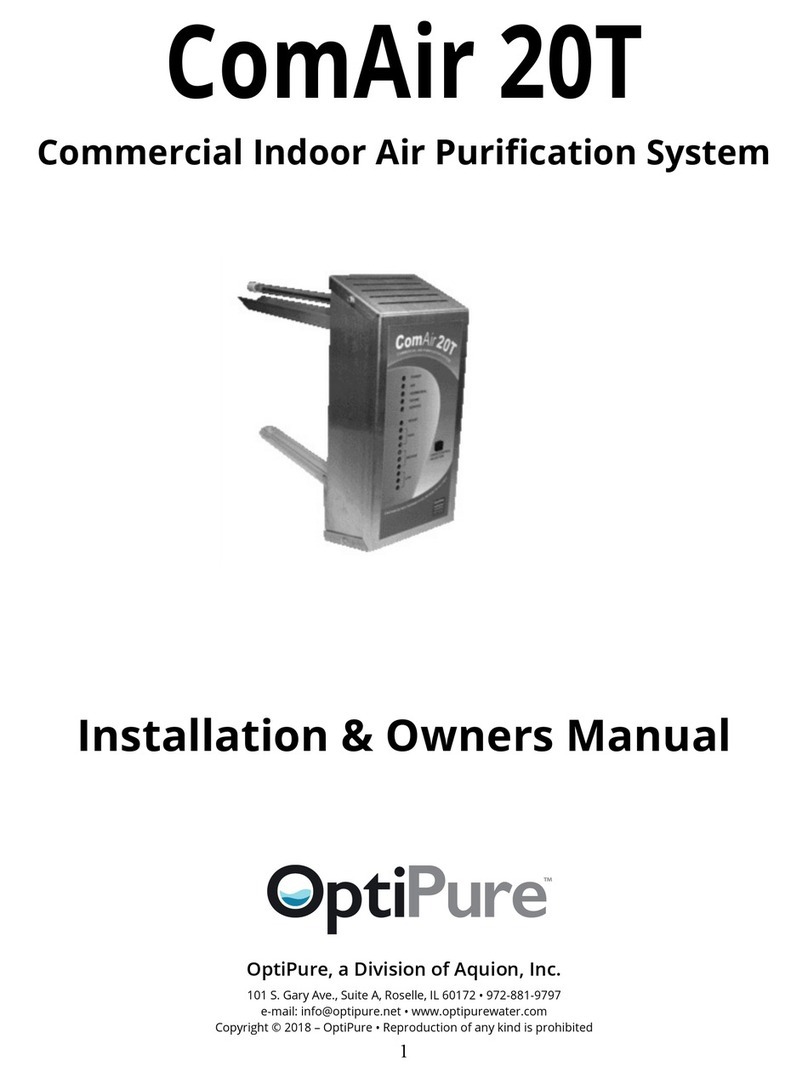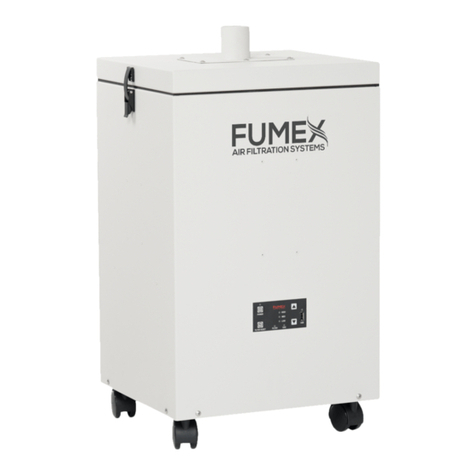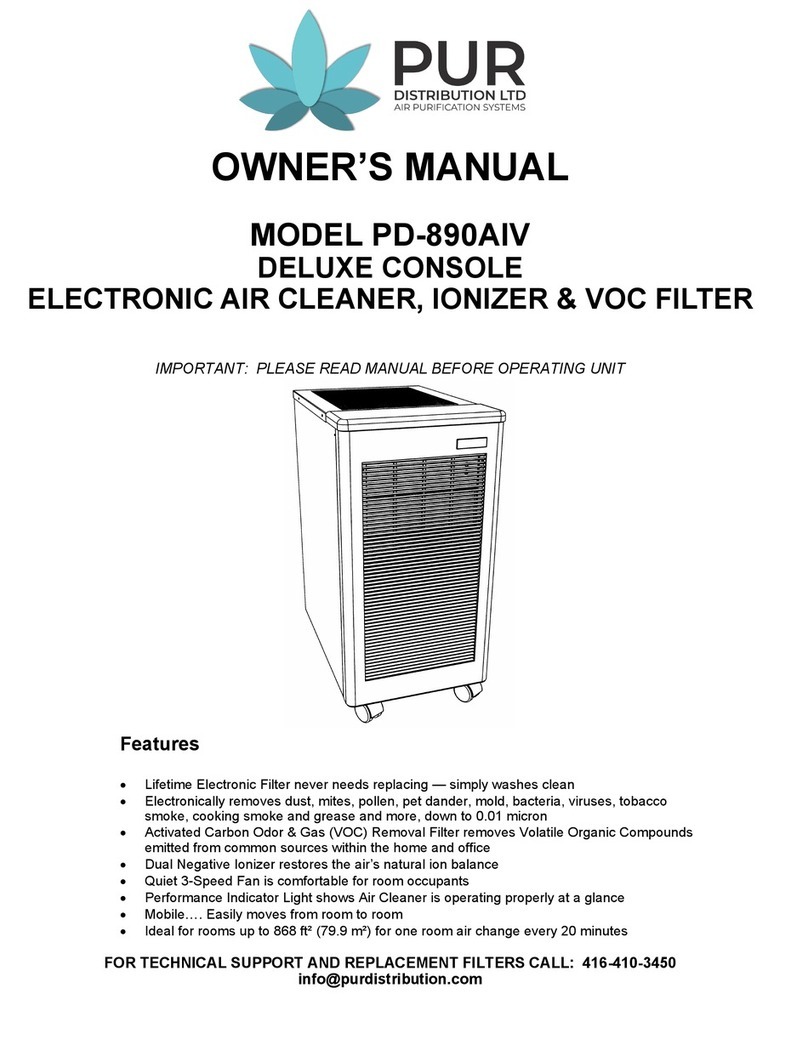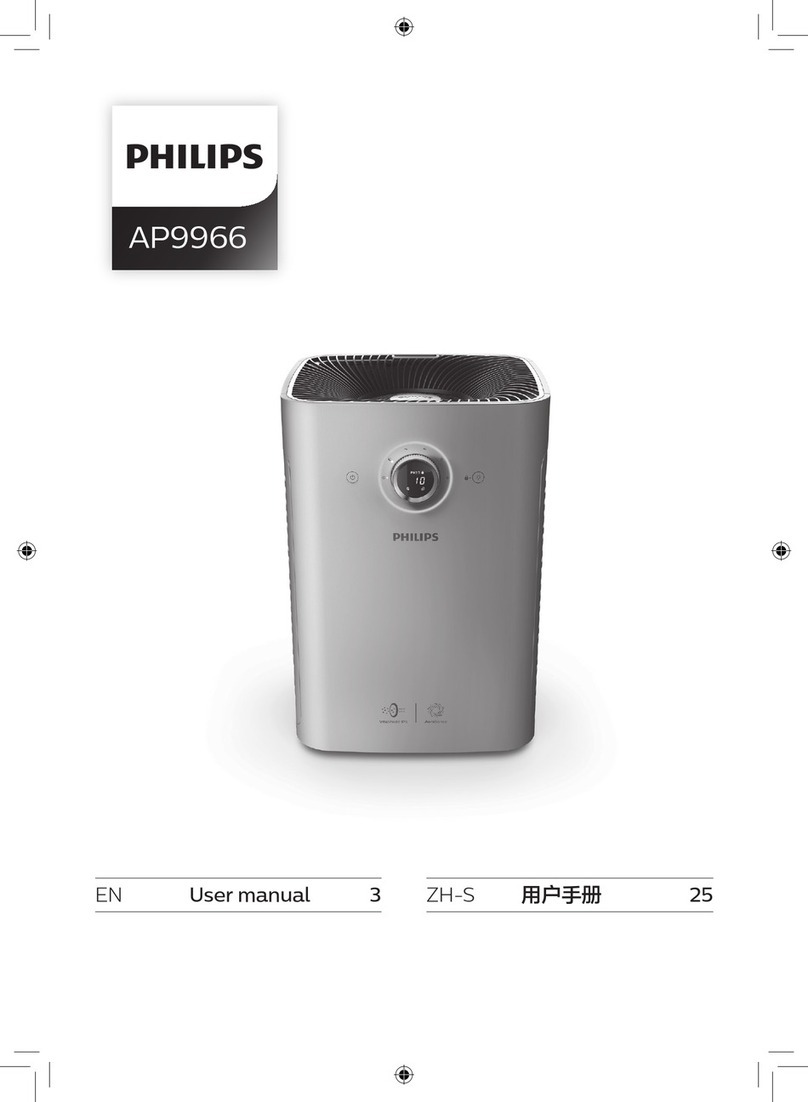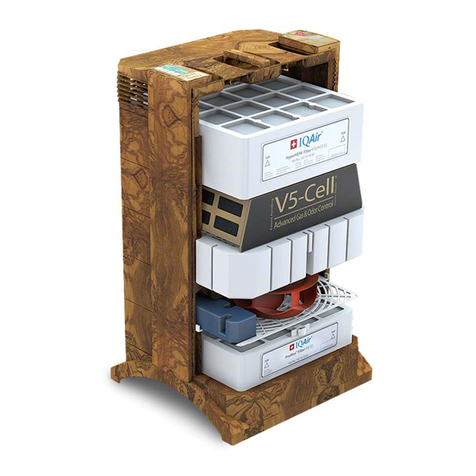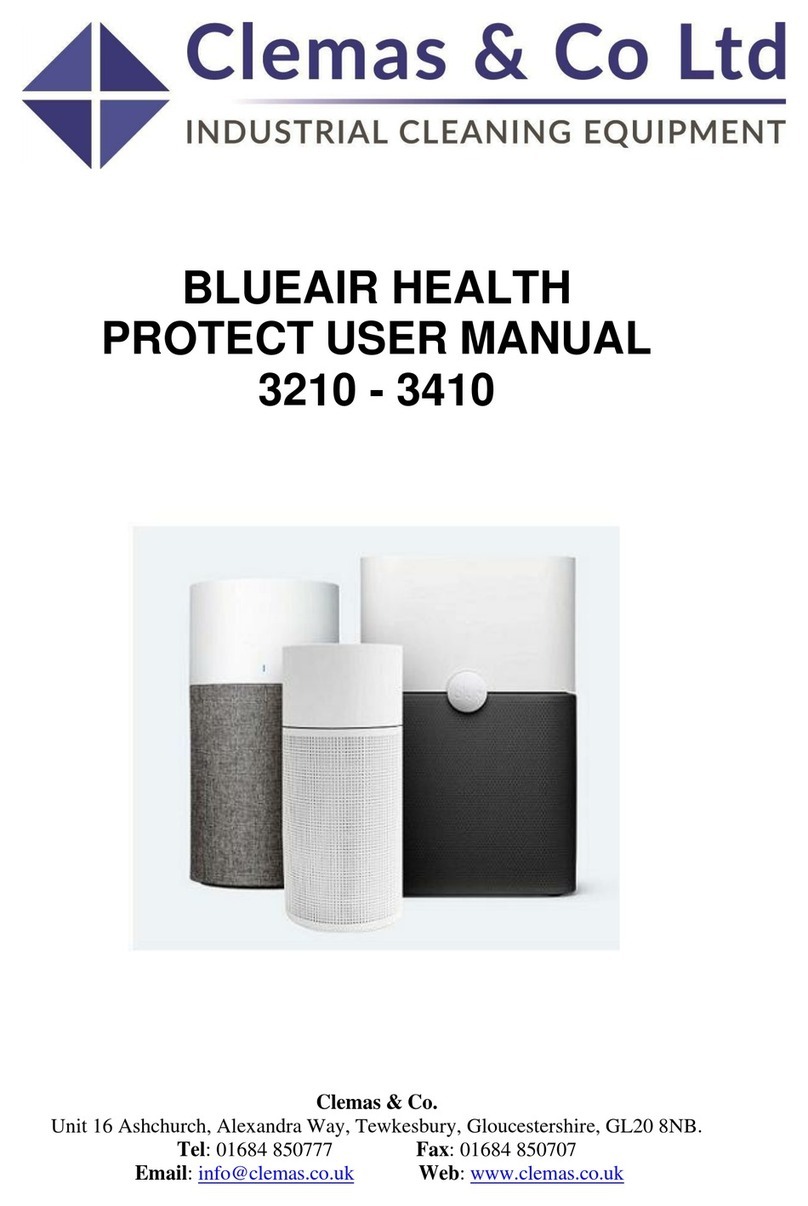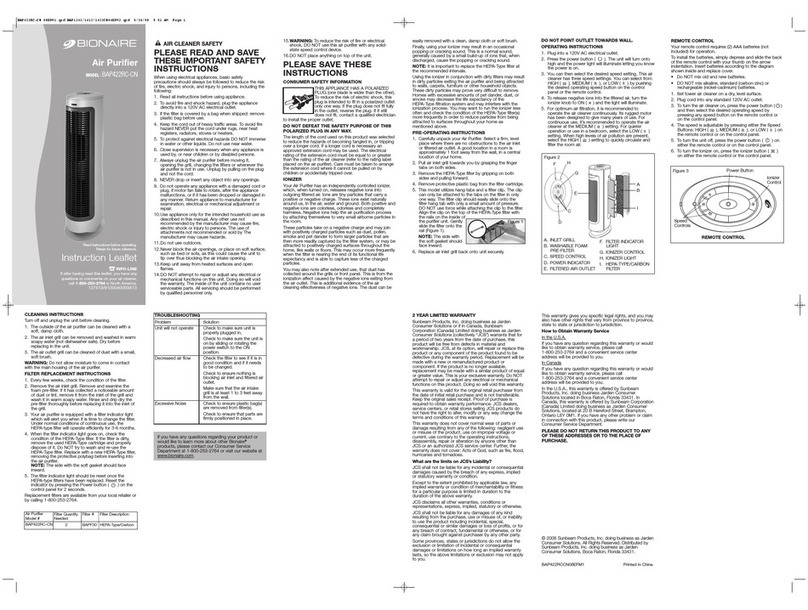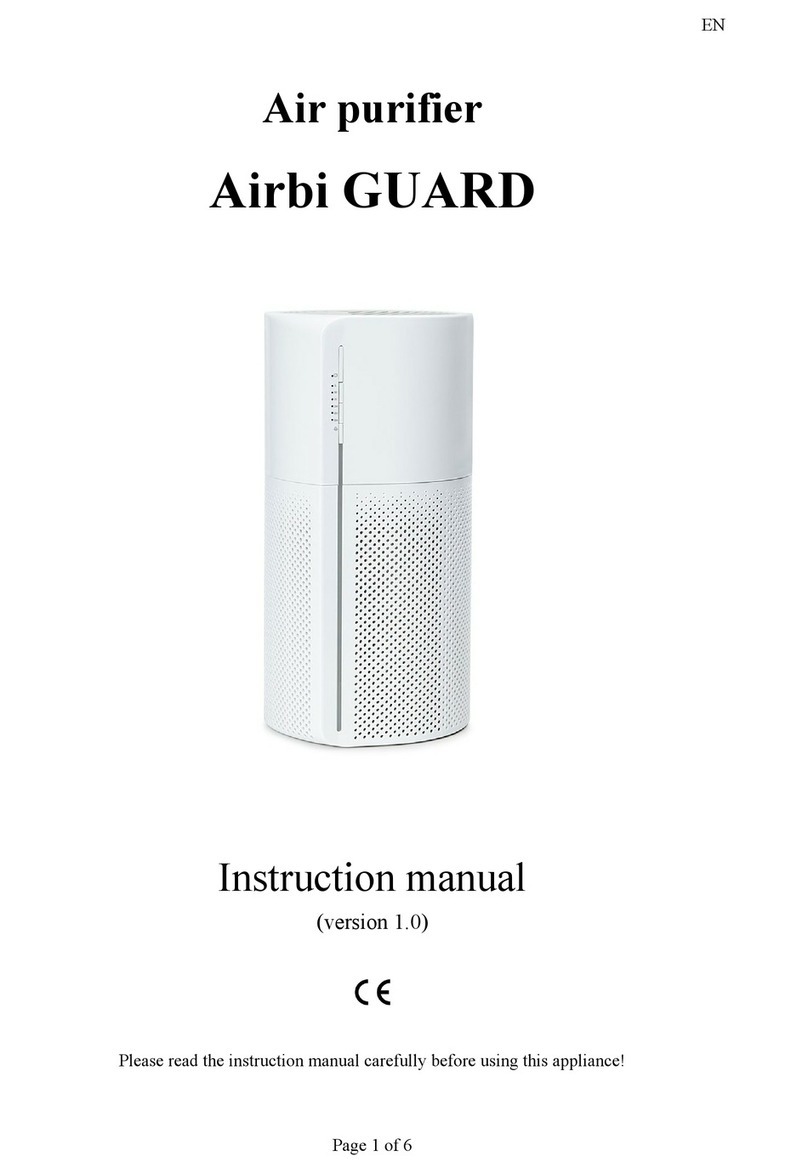GESTRA TD User manual

Steam Drier / Steam Purifier
TD
Air Drier / Air Purifier
TP
Original Installation Instructions
819479-02

Contents
Foreword............................................................................................................................... 3
Availability.............................................................................................................................................3
Formatting features in the document ......................................................................................................3
Safety................................................................................................................................... 3
Use for the intended purpose .................................................................................................................3
Basic safety notes .................................................................................................................................4
Qualification of personnel.......................................................................................................................5
Protective gear......................................................................................................................................5
Typographic features of warning notes....................................................................................................5
Formatting features for warnings of property damage ..............................................................................5
Description............................................................................................................................ 5
Scope of supply and equipment specification ..........................................................................................5
Task and function..................................................................................................................................7
Application of European Directives..........................................................................................................8
Storing and transporting the equipment..................................................................................... 8
Storing the equipment ...........................................................................................................................8
Transporting the equipment ...................................................................................................................8
Mounting and connecting the equipment ................................................................................... 9
Preparing installation .............................................................................................................................9
Connecting the equipment ...................................................................................................................10
Operation ............................................................................................................................ 11
After operation..................................................................................................................... 12
Removing external dirt deposits............................................................................................................12
Maintaining the equipment...................................................................................................................12
Installing spare parts ...........................................................................................................................12
Putting the equipment out of operation.................................................................................... 12
Removing harmful substances..............................................................................................................12
Removing the equipment .....................................................................................................................13
Re-using equipment after storage.........................................................................................................13
Disposing of the equipment..................................................................................................................14
Technical data ..................................................................................................................... 14
Pressure & temperature ratings............................................................................................................14
Weights ..............................................................................................................................................14
Dimensions .........................................................................................................................................14
Manufacturer's declaration .................................................................................................... 15

3
Foreword Formatting features in the
document
These Installation & Operating Instructions help to
ensure the correct, safe and economical use of the
TD steam drier/steam purifier or the TP air drier/air
purifier. The TD steam drier/steam purifier and
TP air drier/air purifier are referred to hereinafter
simply as the equipment.
Certain text elements of this installation & operating
manual feature a specific typographic design. You
can easily distinguish the following text elements:
Standard text
Cross-reference
This installation & operating manual is intended for
anyone commissioning, using, operating, servicing,
cleaning or disposing of this equipment and, in
particular, for professional after-sales service
technicians, qualified personnel and authorised and
trained staff.
Listing
Sub-items in listings
Steps for action.
Here you
will find additional useful
information and tips serving to assist you
in using the equipment to its fullest
potential.
All of these persons must read and understand the
content of this installation & operating manual.
Following the instructions given in this installation &
operating manual helps avoiding danger and
increases the reliability and service life of the
equipment. Please note that in addition to the
instructions given in this installation & operating
manual you must also observe all locally applicable
rules and regulations concerning the prevention of
accidents as well as approved safety guidelines for
good professional practice.
Safety
Use for the intended purpose
The TD steam drier/steam purifier is installed in
steam systems.
The equipment is used to separate water,
suspended liquids and dirt from steam.
Availability The TP air drier/air purifier is installed in
compressed air systems.
The equipment is used to separate water,
suspended liquids and dirt from compressed air.
Keep this installation & operating manual together
with the plant documentation for future reference.
Make sure that this installation & operating manual
is available to the operator.
The equipment must only be used within the
allowable pressure and temperature limits and only
if the chemical and corrosive influences on the
equipment are taken into account.
The installation & operating manual is part of the
equipment. Please hand over this installation &
operating manual when selling the equipment or
passing it on.
Correct use includes compliance with the
instructions given in this installation & operating
manual, in particular obedience to all safety
instructions.
Note that the equipment is also used incorrectly if
the materials of the equipment are not suitable for
the fluid.

4
Basic safety notes destroyed and hot or pressurised fluid may
escape. Make sure that the equipment is always
used within the admissible pressure and
temperature ratings.
You can find information on the pressure and
temperature ratings on the name plate.
Risk of severe injuries
The equipment may become hot during
operation. Do not operate the equipment unless
thermal insulation or protection against
accidental contact prevents you from touching
hot surfaces.
If unsuitable lifting gear is used or the gear is
used improperly the equipment or parts of it
could fall down.
The equipment is under pressure during
operation and may be hot. Before carrying out
any work on the equipment make sure that the
following requirements are met:
Make sure that only qualified personnel lifts
the equipment or parts of it.
Make sure that nobody is standing or
working below the hoisted equipment.
The pipes must be depressurized (0 bar).
Make sure that the lifting gear is of sufficient
strength for the load to be hoisted and that
the load is properly secured and attached to
it. For more information on the nature and
weight of the components and safe lifting
points please contact the manufacturer.
The fluid must be completely removed from
the pipes and the equipment.
During work on the equipment the
installation must be switched off and
protected against unauthorised or
unintended activation.
Make sure that all locally applicable
regulations on safety and the prevention of
accidents are strictly adhered to.
The pipes and the equipment must have
cooled down to room temperature (approx.
20 °C).
Risk of minor injuries
If the equipment is used in contaminated areas
there is a risk of severe injuries or death caused
by harmful substances in or on the equipment.
Before working on the equipment make sure
that it is completely decontaminated. Always
wear the protective clothing prescribed for
contaminated areas when working on the
equipment.
Sharp edges on internals present the danger of
cuts to hands. Always wear industrial gloves
when servicing the equipment.
If the support of the equipment during
installation is insufficient the equipment might
fall down, thereby causing bruises or injuries.
Make sure the equipment is safely held in place
during installation and cannot fall down. Wear
protective safety footwear.
The equipment must only be used with fluids
that do not attack the material and the gaskets
and sealings of the equipment. Otherwise leaks
may occur and hot or toxic fluid could escape.
The equipment and its component parts must
only be mounted or removed by qualified
personnel. A qualified person must be
acquainted with and experienced in the
following:
Making pipe connections.
Selecting suitable lifting gear and
understanding the rules for its safe use.
Working with dangerous (contaminated, hot
or pressurized) fluids.
If the admissible pressure and temperature
ratings are exceeded, the equipment may be

5
Information on property damage or
malfunctions Typographic features of warning
notes
Malfunctions will occur if the equipment is
installed in a wrong position or with the flow
pattern in the opposite direction of the fluid flow.
This may result in damage to the equipment or
the installation. Make sure that the flow pattern
indicated in this installation and operating
manual matches the direction of the fluid flow in
the pipe.
DANGER
Notes with the heading DANGER warn
against imminent dangerous situations that
can lead to death or serious injuries.
CAUTION
Notes with the heading CAUTION warn
against dangerous situations that could
le
ad to minor or moderate injuries.
If the material is unsuitable for the fluid,
increased wear may occur and fluid may
escape. Make sure that the material is suitable
for the fluid used in your installation.
Qualification of personnel
Formatting features for warnings
of property damage
A qualified person must be acquainted with and
experienced in the following:
the pertinent on-site rules and regulations for
preventing fire and explosions
Attention!
This information warns of a situation
leading to property damage.
working on pressure equipment
making pipe connections
working with dangerous (hot or pressurized)
fluids
Description
lifting and transporting loads
observing all notes and instructions in this
installation & operating manual and the
applicable documents Scope of supply and equipment
specification
Protective gear
Scope of supply
The required protective gear depends on the types
of fluid used and the regulations on site. For more
information on suitable safety clothing and safety
gear refer to the safety data sheet of the fluid in
question.
Our equipment is delivered packed and ready for
assembly.
Equipment specification
The equipment features the following connections:
Protective gear comprises the following items:
Connection for steam or air inlet
protective helmet
Connection for steam or air outlet
work boots
Connection for condensate outlet
industrial leather gloves
Vent (nominal size 200 upwards)

6
Nominal sizes 15 to 175
Nominal size 200 upwards
No.
Designation
1
Connection for steam or air inlet
2
Connection for steam or air outlet
4
Name plate
6
Connection for condensate outlet
No.
Designation
1
Connection for steam or air inlet
2
Connection for steam or air outlet
3
Vent (only needed for work by the
manufacturer)
4
Name plate
5
Inspection hole
6
Connection for condensate outlet
7
Lugs (nominal size 200 upwards)

7
End connections Function
The equipment is available with the following end
connections:
The humid and impure steam or air flows along the
fixed helix (8) in a downward spiral. Above the
sump cover plate (9), the flow of the steam or air is
reversed, giving rise to centrifugal, impact and
swirling forces. These forces separate heavy
particles such as impurities or liquids from the
steam or air. These heavy particles are then
conveyed into the collecting chamber (10).
Flanges
Screwed sockets
Name plate
The following items are indicated on the name
plate: The change in the direction of flow prevents them
from being drawn along by the steam or air.
Manufacturer
Type designation
Min. service temperature
Max. service temperature
Max. service pressure
Direction of flow
Mark e.g. CE, UKCA (if required)
Year of construction
Serial number
Type of vessel
Weight
Body of regulations
Test pressure
Test date
Volume
Task and function
Purpose
The TD steam drier/steam purifier is installed in
steam systems.
The equipment is used to separate water,
suspended liquids and dirt from steam.
The TP air drier/air purifier is installed in
compressed air systems.
The equipment is used to separate water,
suspended liquids and dirt from compressed air.
The equipment can function as a steam or air drier
and a steam or air purifier, either at the same time
or individually.
It separates liquids, entrained water droplets or
impurities out of the flow of steam or air, with little
loss of pressure.

8
Application of European Directives Storing the equipment
Pressure Equipment Directive Please observe the following items when storing
the equipment:
The equipment must conform to the requirements
of the Pressure Equipment Directive (see
Manufacturer's Declaration) and can be used for
the following media:
Do not store the equipment for more than 12
months.
Use the supplied sealing plugs or other suitable
seal caps in order to seal off all openings of the
equipment.
Fluids of group 2
ATEX Protect the sealing surfaces and contact areas
against mechanical damage.
The equipment does not have its own potential
ignition source and is not subject to the ATEX
Directive (see Manufacturer's Declaration).
Protect the equipment and all components
against hard shocks and impacts.
Store the equipment only in closed rooms that
meet the following environmental conditions:
Static electricity: Static electricity can be produced
in the system if the equipment is installed between
pipe flanges. Air humidity below 50 %, not condensing
If the equipment is used in potentially explosive
atmospheres, the discharge or prevention of
possible electrostatic charging is the responsibility
of the manufacturer or operator of the system.
Indoor air: clean, salt-free and non-corrosive
Temperature 5–40 °C.
Make sure that all these requirements are
always met when storing the equipment.
Storing and transporting the
equipment
Please contact the manufacturer if you cannot
comply with the recommended storage
conditions.
Transporting the equipment
Attention!
Equipment can be damaged if stored or
transported improperly.
Close all openings with the sealing
plugs or covers supplied with the
equipment or use similar sealing
covers.
Protect the equipment against
moisture and corrosive atmospheres.
Please contact the manufacturer if the
specified transport and/or storage
requirements cannot be met.
DANGER
Risk of bruises if the equipment or
component parts fall down.
Use suitable lifting gear when moving
or lifting the equipment and/or
component parts.
Make sure that the equipment cannot
topple over.
Make sure that nobody is standing
below the lifted equipment.
Lightweight equipment may be transported and
mounted without using any lifting gear.
To lift equipment the weight of which exceeds
approx. 25 kg, you need the help of a second
person or suitable lifting gear.
Your physical strength and on-site regulations and
conditions determine what weight can be lifted and
if support is required.

9
Meet the requirements for storage also when
transporting the equipment.
Your physical strength and on-site regulations and
conditions determine what weight can be lifted and
if support is required.
Prior to transport seal off connections with
sealing plugs.
Take the equipment out of the transport
packaging.
If you do not have the sealing plugs
supplied with the equipment u
se
appropriate seal caps to seal off the
connections.
Check the equipment for transport damage.
Contact the manufacturer if you detect any kind
of shipping damage.
For short distances (only a few metres) you can
transport the equipment unpacked.
When supplied by the factory, the connections may
be sealed off with sealing plugs.
When transporting the equipment over larger
distances use the original packaging.
Remove sealing plugs before mounting the
equipment.
If you do not have the original packaging use a
box that protects the equipment adequately
against corrosion and physical damage.
Keep the sealing plugs and the packing for
further use.
DANGER
Personnel working on pipes are exposed to
safety risks and may suffer severe injuries,
poisoning or even loss of life.
Make sure that no hot or hazardous
fluid is in the equipment or the pipes.
Make sure that the pipes upstream
and
downstream of the equipment are
depressurised.
Make sure that the installation is
switched off and protected against
unauthorised or unintended activation.
Make sure that the equipment and the
pipes have cooled down to room
temperatures.
Wear protective clothing that is
suitable for the fluid and, if necessary,
wear protective gear.
For a short period of time the equipment
may be transported even if the
temperature is below 0
°C, provided that
the equipment is completely empty
and
dry.
Mounting and connecting the
equipment
Preparing installation
DANGER
Risk of bruises if the equipment or
component parts fall down.
Use suitable lifting gear when moving
or lifting the equipment and/or
component parts.
Make sure that the equipment cannot
topple over.
Make sure that nobody is standing
below the lifted equipment.
For more information on suitable protective clothing
and safety gear refer to the safety data sheet of the
fluid in question.
Drain pipes until they are empty.
Lightweight equipment may be transported and
mounted without using any lifting gear.
Switch the installation off and protect it against
unauthorised or unintended re-activation.
To lift equipment the weight of which exceeds
approx. 25 kg, you need the help of a second
person or suitable lifting gear.

10
Connecting the equipment Make sure that the pipe system of the plant is
clean.
DANGER
Incorrectly connected equipmen
t can
cause fatal accidents or severe injuries.
Make sure that only qualified skilled
personnel connect the equipment to
pipes.
Make sure that the equipment is free from
foreign matter.
Install the equipment in the pipe.
Fit the equipment so that the connection for the
condensate outlet (6) faces down.
Make sure that the fluid supply is connected to
the steam or air inlet (1) connection.
Specialist personnel must be highly qualified and
fully experienced in making pipe connections for the
respective type of end connection.
Make sure that the fluid drain is connected to
the steam or air outlet (2) connection.
Fit a suitable steam trap (11) to the condensate
outlet (6) connection.
Connect the equipment only as described in this
installation & operating manual. Information on suitable steam traps can be obtained
from the manufacturer.
Caution
Escaped fluid due to damaged seals
can
harm the environment!
Make sure that sealing surfaces are
undamaged.
Clean sealing surfaces before
installing a new seal.
Replace every seal after disassembly.
Tighten threaded joints to the
specified torque.
Make sure that the equipment is not under any
stress when installed.
Equipment nominal size 200 and upwards is fitted
with lugs (7) for support. However, these lugs are
not pre-drilled.
Properly secure equipment nominal size 200
and upwards to a support.
The support must be able to bear the full weight of
the equipment. You can find weight information on
the name plate. Instructions for secure fastening
can be obtained from the manufacturer.
Attention!
The equipment can be damaged if
connections are too weak.
Make sure that the connected
equipment is not subjected to any
forces or torques.
The operator has to ensure that the equipment and
the sealing material is suitable for the fluid used in
his system.
Make sure that all components of the equipment
are made of materials that are suitable for the
fluid used.
For more information please contact the
manufacturer.
Inspect all seals before installation to ensure
they are in perfect condition.

11
Make sure that the equipment is fastened so
that its full weight is supported.
Installation examples
The diagram below shows installation examples
without (left) and with (right) stop valves.
Make sure that the equipment is safely mounted
and that all connections are made correctly.
Operation
When warm, check the flanged unions for
tightness. Do not work on the equipment while it is operating.
Re-tighten the bolted connections if necessary
During operation the surface of the equipment gets
hot. This presents the risk of burns.
Lag the surface of the equipment with suitable
insulating material.

12
After operation Maintaining the equipment
The equipment does not require any particular
maintenance.
DANGER
If the equipment is used in contaminated
areas there is a risk of severe injuries or
death caused by harmful substances in or
on the equipment.
Only qualified personnel are allowed to
perform work on contaminated
equipment.
Always wear the protective clothing
prescribed for contaminated areas
when working on the equipment.
Make sure that the equipment is
completely decontaminated before
carrying out any service work.
Follow the pertinent instructions for
handling the hazardous substances in
question.
Examine the equipment at regular intervals and
check it for correct operation.
If necessary, clean the equipment.
Installing spare parts
No spare parts are available for the equipment.
Replace a defective device with a new one.
Putting the equipment out of
operation
Removing harmful substances
DANGER
If the equipment is used in contaminated
areas there is a risk of severe injuries or
death caused by harmful substances in or
on the equipment.
Only qualified personnel are allowed to
perform work on contaminated
equipment.
Always wear the protective clothing
prescribed for contaminated areas
when working on the equipment.
Make sure that the equipment is
completely decontaminated before
carrying out any service work.
Follow the pertinent instructions for
handling the hazardous substances in
question.
The operator must ensure that the equipment can
be safely drained on site.
Attention!
Frost damage may occur when the
installation is shut down.
Drain the equipment if ambient
temperatures below 0 °C
(frost) are to
be expected.
Drain the equipment using the connected steam
trap.
Removing external dirt deposits
To remove dirt deposits rinse the equipment
with fresh water and wipe it with a clean, lint-
free cloth.
To remove any persistent residues use a
cleaning agent that is suitable for the material
and carefully wipe the equipment with a clean,
lint-free cloth.

13
Qualified personnel must have extensive experience
with and a working knowledge of:
For more information on suitable protective clothing
and safety gear refer to the safety data sheet of the
fluid in question.
pertinent rules and regulations concerning
handling hazardous substances
DANGER
Risk of bruises if the equipment or
component parts fall down.
Use suitable lifting gear when moving
or lifting the equipment and/or
component parts.
Make sure that the equipment cannot
topple over.
Make sure that nobody is standing
below the lifted equipment.
special regulations for handling the hazardous
substances encountered on site
using the required personal protective
equipment (PPE) and clothing
CAUTION
Environmental damage may be caused by
poisonous fluid residues.
Before disposing of the equipment
make sure that it is clean and free of
fluid residues.
For the disposal of all materials
o
bserve the pertinent legal regulations
concerning waste disposal.
Detach the equipment connections from the
pipes.
Unfasten the lugs from the supports.
Place the equipment on a suitable surface.
Remove all residues from the equipment. Store the equipment as described on page 8.
For the disposal of all residues observe the
pertinent legal regulations concerning waste
disposal.
Re-using equipment after storage
Observe the following instructions if you want to
remove the equipment and use it again somewhere
else:
Removing the equipment
DANGER
Personnel working on pipes are exposed to
safety risks and may suffer severe injuries,
poisoning or even loss of life.
Make sure that no hot or hazardous
fluid is in the equipment or the pipes.
Make sure that the pipes upstream
and downstream of the equipment are
depressurised.
Make sure that the installation is
switched off and protected against
unauthorised or unintended activation.
Make
sure that the equipment and the
pipes have cooled down to room
temperatures.
Wear protective clothing that is
suitable for the fluid and, if necessary,
wear protective gear.
Make sure that the equipment is free of any
fluid residues.
Make sure that all connections are in good
condition and leak-free.
Use the equipment only for its intended purpose
and the service conditions for which it was
specified.

14
Disposing of the equipment Technical data
CAUTION
Environmental damage may be caused by
poisonous fluid residues.
Before disposing of the equipment
make sure that it is clean and free of
fluid residues.
For the disposal of all materials
observe the pertinent legal regulations
concerning waste disposal.
Pressure & temperature ratings
You can find the values for your equipment on the
rating plate.
Weights
You can find the values for your equipment on the
rating plate.
Dimensions
The equipment is made of welded sheet steel.
By way of example, the diagram below
shows a standard device with flanged end
and direction of flow from left to right.
PN
Material
Flange
Pipe
Base
16
1.0460
(P250GH)
1.0345
(P235GH+N)
1.0425
(P265GH)
16
1.4571 (X6CrNiMoTi17-12-2)
40 1.0460
(P250GH)
1.0345
(P235GH+N)
1.0425
(P265GH)
You can return the equipment to your contractual
partner.
Make sure that all harmful substances are
removed from the equipment.
Pay attention to the instructions in section
"Transporting the equipment" from page 8.
Pack the equipment in its original packaging or
in suitable transport packaging.
The transport packaging must protect the
equipment from damage in the same way as the
original packaging.
Send the completed and signed
decontamination declaration with the
equipment. The decontamination declaration
must be attached to the packaging so that it is
accessible from outside.
Register the return delivery with your contractual
partner before returning the equipment.

15
Nominal
size
Nominal diameter
D
L
H1
H2
Volume
Steam
inlet/
outlet
Condensate
outlet
Inspection
hole X
[mm]
[l]
15
15
15
–
60
210
80
310
0.6
20
15, 20
15
–
60
220
85
305
0.7
25
15, 20,
25
15
–
70
220
95
385
1.4
32
20, 25,
32
15
–
70
220
105
375
1.5
40
25, 32,
40
15
–
115
270
120
370
3.5
50
32, 40,
50
15
–
115
270
130
360
3.7
65
40, 50,
65
15
–
170
320
150
460
10.6
80
50, 65,
80
15
–
200
360
160
500
14.7
100
65, 80,
100
20
–
220
410
190
570
22.9
125 80, 100,
125
20 – 250 440 215 655 34.0
150
100, 125,
150
25
–
270
500
230
740
49.0
175
125, 150
25
–
320
560
240
870
76.0
200
150, 200
25
150
350
650
285
1,055
119.0
250
150, 200,
250
25
150
400
720
330
1,170
178.0
Manufacturer's declaration
You can find details on the conformity of the
equipment in our Declaration of Conformity or
Manufacturer's Declaration.
GESTRA AG
Münchener Straße 77
28215 Bremen
Germany
You can download the latest Declaration of
Conformity or Manufacturer's Declaration at
www.gestra.com or request it from the address
below:
Telefon
+49 421 3503-0
Telefax
+49 421 3503-393
E-Mail
Web
www.gestra.com
This declaration is no longer valid if modifications
are made to the equipment without consultation
with us.

16
Agencies all over the world: www.gestra.de
GESTRA AG
Münchener Strasse 77
28215 Bremen
Germany
Phone
+49 421 3503-0
Fax
+49 421 3503-393
e-mail
Web
www.gestra.com
819479-02/05-2021 kx_mm (808935-03) © GESTRA AG Bremen Printed in Germany
This manual suits for next models
1
Table of contents
Popular Air Cleaner manuals by other brands
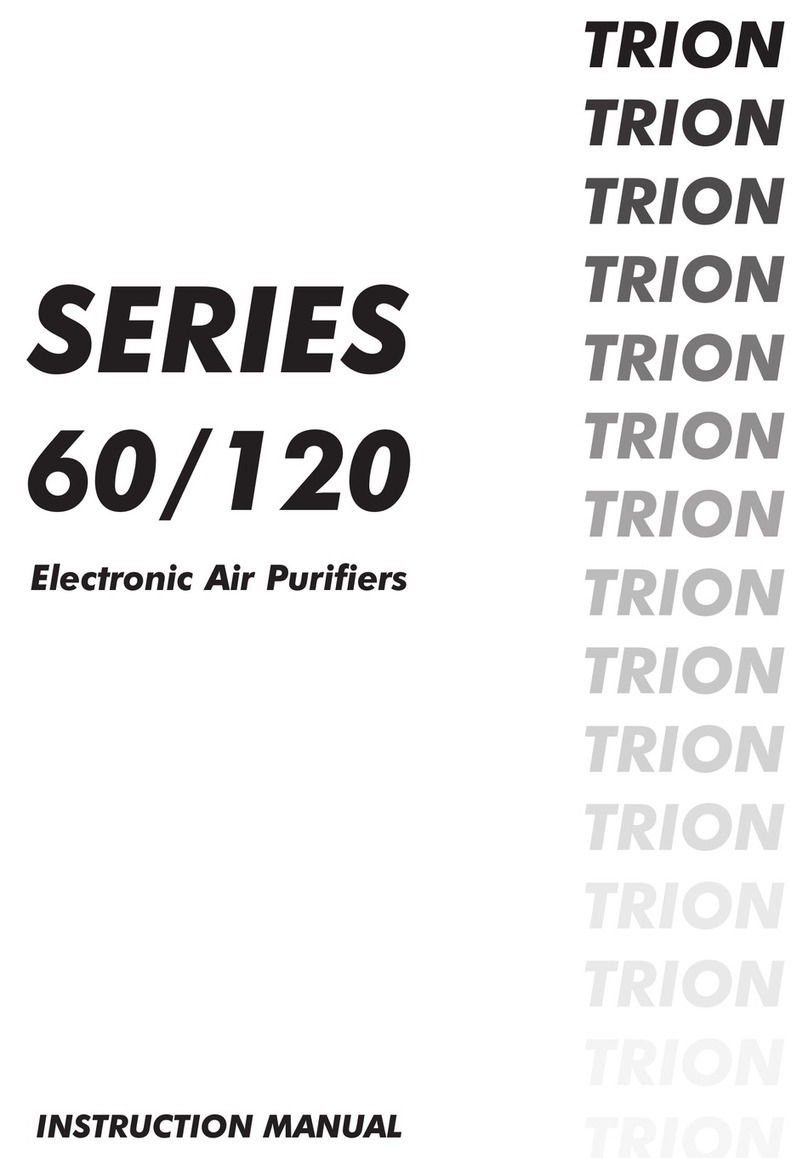
Trion
Trion 60 Series instruction manual

Gastroback
Gastroback AG+ AIRPROTECT operating instructions
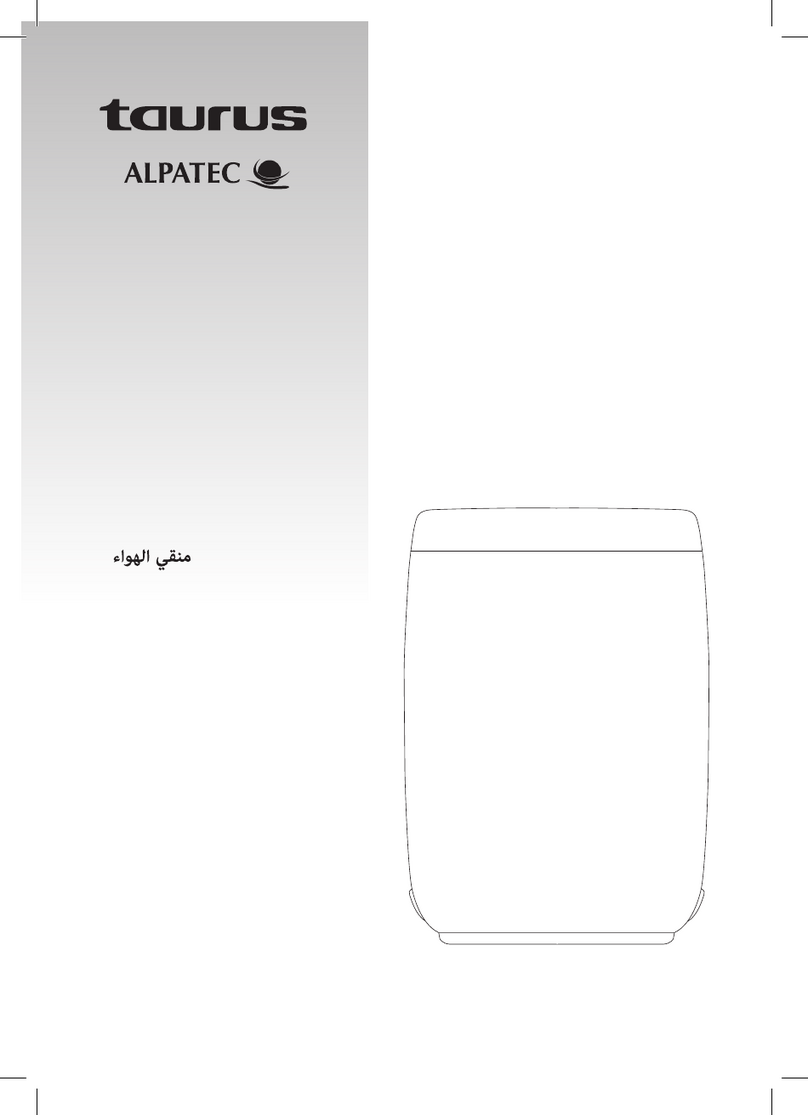
Taurus Alpatec
Taurus Alpatec AC1215/10 manual
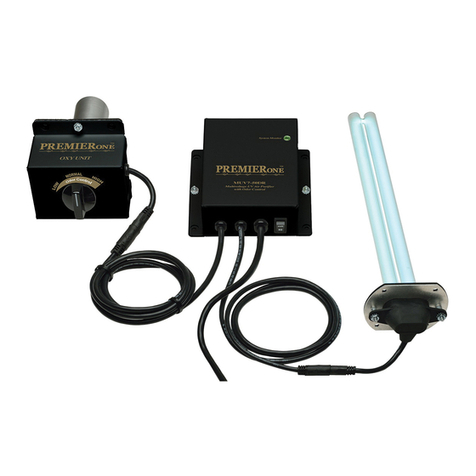
PremierOne
PremierOne MUV7-100TR Installation & maintenance instructions
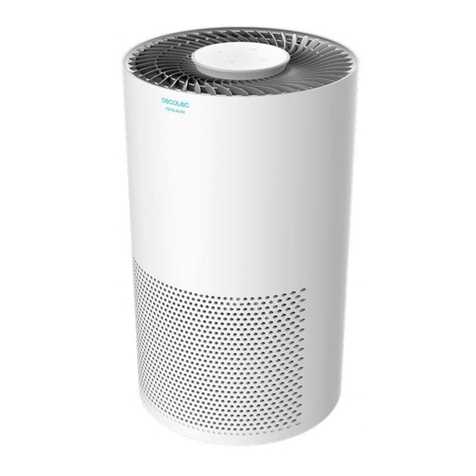
cecotec
cecotec TOTALPURE 2000 CONNECTED instruction manual
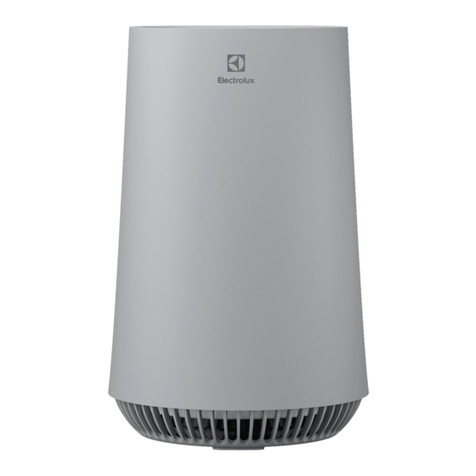
Electrolux
Electrolux FLOW A3 Instruction book



